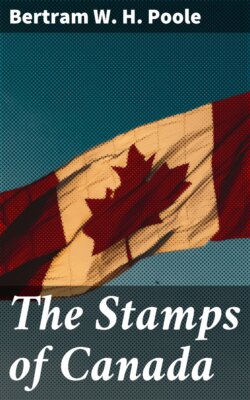Читать книгу The Stamps of Canada - Bertram W. H. Poole - Страница 9
Chapter IV.—The Second Issue.
ОглавлениеTop
The third report of the Postmaster-General for Canada, dated March 31st, 1854, refers to a change in the rates of postage on single letters sent abroad and also mentions the possibility of additions to the meagre set of three values then current, viz.:—
In March, 1854, the charge on packet letters between Canada and the United Kingdom and most foreign countries was reduced by the Imperial Government from 1s. 2d. sterling to 8d sterling the ½ oz., when sent in the closed mails through the United States, and from 1s sterling to 6d when sent from a provincial port—Quebec and Halifax. Should no further changes be likely soon to take place in the charges on the correspondence with England, it would promote the public convenience to procure postage stamps of the value of 10d and 7½d respectively, to correspond with the present packet charges.
In the Postmaster-General's fourth annual report, issued in the following year, the above recommendation was adopted so far as the 10d value was concerned, for we read:—
To promote the general convenience of the public in prepaying letters to the United Kingdom at the new rate, postage stamps of the value of 10d currency, equal to 8d sterling, were procured, and issued to the public.
According to documentary evidence unearthed by Messrs. King and Howes the plate for this value was made, and the first stamps were printed from it during the last quarter of 1854, for in the Post Office accounts for that period the item, “Rawdon, Wright & Co., Making Stamps, £42–18-6,” appears. According to another list compiled from official sources the stamps did not reach Canada until January 2nd, 1855, and though we know of no official document bearing on the actual date of issue, or of any very early dated cover, in view of the fact that the stamps represented a denomination for which there was an urgent demand, it is only reasonable to suppose that this 10d value was placed on sale some time during the month of January, 1855.
Mr. King states that this value was printed in sheets of 100 stamps, arranged in ten horizontal rows of ten, and with the manufacturers' imprint shown eight times on the margins, as in the case of the three stamps previously issued. Mr. Howes, however, is of the opinion that these 10d stamps were printed in sheets of 120, 10 rows of twelve each, like the 7½d value issued later, and in support of his theory points out that the quantities delivered in the first supply (100,080) and second supply (72,120) are exactly divisible by 120 into 834 and 601 full sheets respectively, whereas neither of these numbers is divisible by 100 into an even number of complete sheets. In view of the absence of positive evidence in the shape of an entire sheet or full horizontal row of stamps, it must be admitted that there is much to be said in favor of Mr. Howes' theory. It will be noted the stamps have the values expressed in English currency, and the almost universal rule for stamps printed with values in shillings or pence, has been sheets of 60, 120, or 240 owing to the fact that with such an arrangement reckoning in this currency is greatly simplified.
The design corresponds in its general appearance to the 6d and 12d of 1851 though the portrait in the central oval is of Jacques Cartier, the discoverer of Canada. In the 'eighties there was some little discussion regarding the portrait on this 10d stamp some claiming it was not intended to represent Cartier, but Sebastian Cabot. A writer on the Halifax Philatelist for 1888 says: “It is identically the same as all the existing portraits of Jacques Cartier, and totally unlike those existing of Sebastian Cabot. The style of dress and the way the beard is worn is that of the sixteenth century, instead of the fifteenth. There is a very rare and old print of Sebastian Cabot, taken from the original painting in the possession of Charles Jost Harford, Esq., in the Legislative Library at Halifax, and anything more dissimilar to the face on the 10 pence stamp cannot be imagined.” The official notice announcing the issue of the stamp, to which we have already referred, makes no mention of the design at all but the portrait is undoubtedly that of Cartier and Mr. Howes tells us that the original is a “three-quarter length portrait in the Hotel de Ville at St. Malo, France, the birthplace of Cartier.”
Jacques Cartier was born at St. Malo, as stated above, in 1491. In 1534 he sailed with two small vessels on a voyage of discovery, touching at Newfoundland, and discovering New Brunswick. In a second voyage (1535–6) he explored the St. Lawrence, and took possession of the land he discovered in the name of Francis I of France. He made a third voyage in 1541 and died in 1557.
The words CANADA POSTAGE and TENPENCE on the inscribed oval frame are separated by a small beaver at the right and three maple leaves at the left. In the lower corners are the numerals “10” followed by “cy” for currency, while in each of the upper angles is “8d stg”, representing the equivalent value in sterling.
Only the two supplies of this value, mentioned previously, were printed making a total of 172,200 stamps. When the decimal currency was introduced there was a balance on hand of 31,200, which were afterwards destroyed so that the total quantity of 10d stamps issued was 141,000.
A double-transfer variety of this denomination is described by Mr. Howes as follows:—
